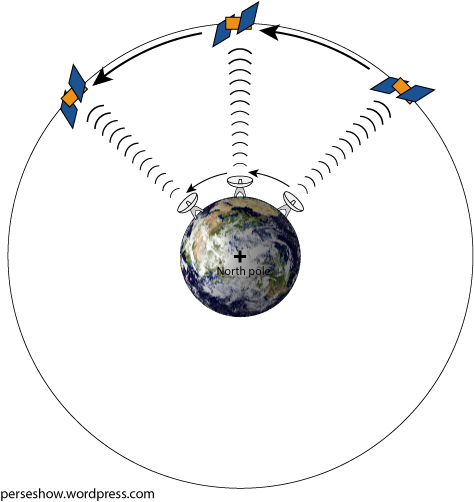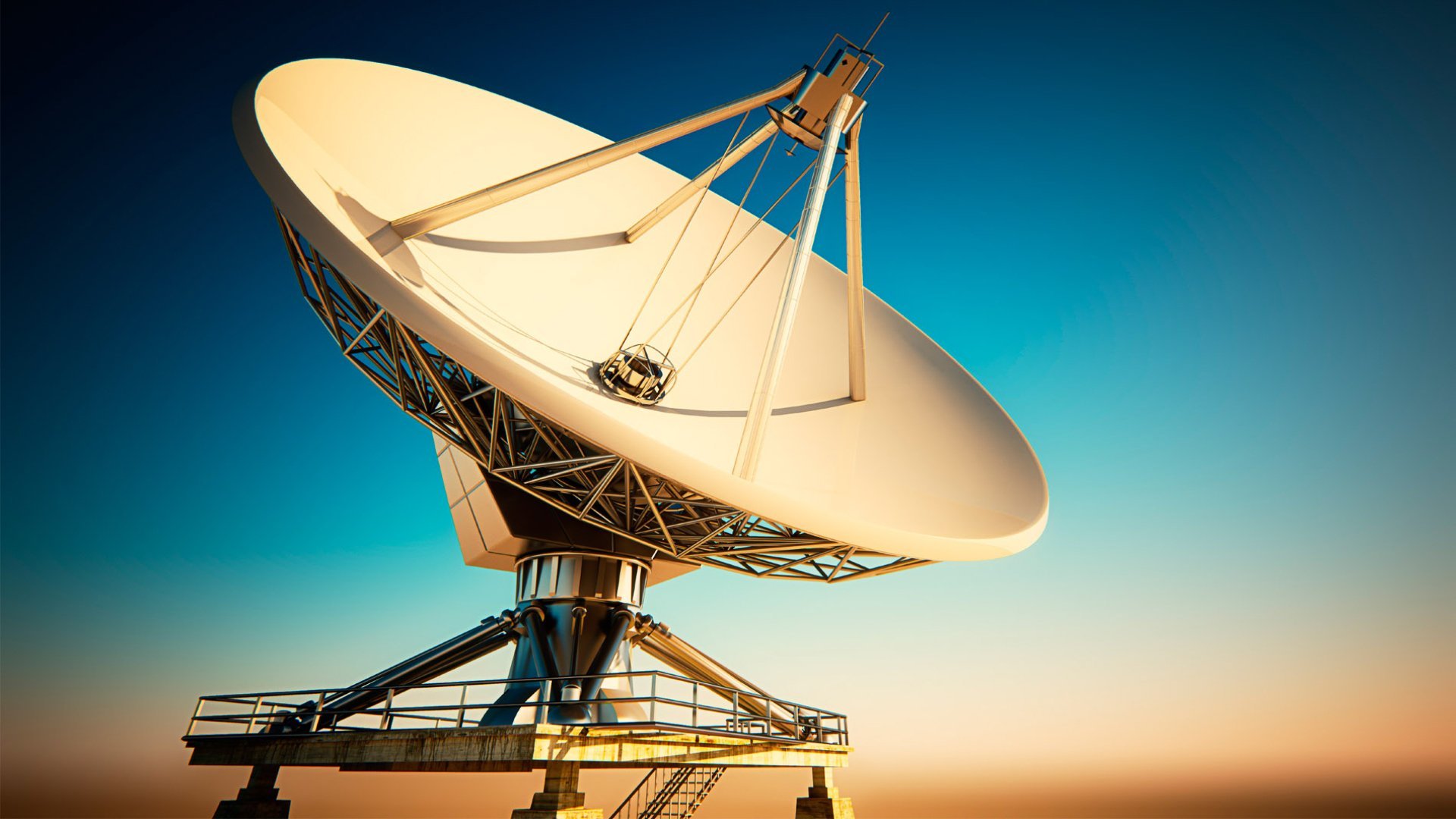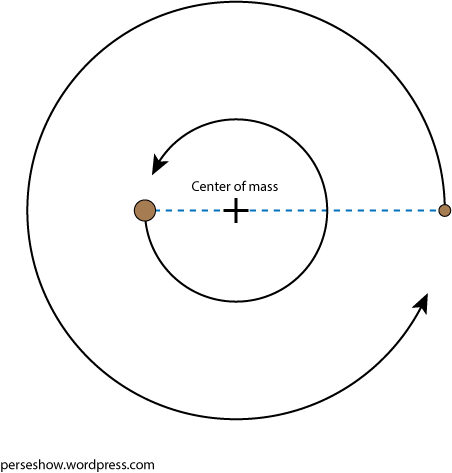
Since Aristotle’s time over 2000 years ago, we have accepted that the moon orbits the Earth. We didn’t always know why, and we didn’t always accept this for the right reasons.
We used to assume that it happened just because we saw the moon move across the sky, and we believed the Earth to be the center of all motion in the solar system. But even when we realized—in the 1540s CE—that the sun was in fact the center of the solar system, the moon kept its place around the Earth.
And rightfully so. Astronomers now know that the moon orbits the Earth based on scientific observation, rather than the “logical” guesses of Aristotle’s time. And we even know why it orbits—gravity, the one force in all the universe we can’t escape.
But I can tell you, the moon’s orbit isn’t a perfect circle, and if gravity were the only reason it orbited, it would crash straight into the Earth. After all, people stay grounded on Earth’s surface because of gravity, and we don’t orbit our planet, do we?
So how does the moon orbit the Earth? For that matter, how does any satellite?
The secret lies in free fall.
What is free fall, anyway?
Well, it’s what happens when you skydive.

Explains why skydiving is so terrifying, doesn’t it? This person here is falling freely. Air resistance is minimal up until a certain point, and there’s no parachute catching them. Eventually, they will need to pull their chute, but for now, they are in free fall.
Or…at least something very like free fall. For real free fall, you need to get into space.
Just the space beyond Earth’s atmosphere will do. Out there, there is no air resistance, nothing to cause friction and change your movement. You’re bound only by Newton’s first law of motion—that an object in motion will stay in motion unless a force acts on it.
And guess what? There is a force. Just one. Well, technically there’s a force from every object in the universe, but only one is big enough to make any difference. That’s Earth’s gravity.
If you’re caught in Earth’s gravity and you’re not in motion, it sucks for you. Because it’ll reel you in and before you know it, you’ll be a skydiver all over again—and I really hope you came prepared with a parachute.
So how do we get in Earth’s gravity but not crash into the planet and get smushed?
Well, it’s obviously possible. Because astronauts do it all the time.

As you can see, this astronaut is hanging onto the outside of a spacecraft. (I’m guessing the International Space Station, but I don’t know for sure.) And the only thing keeping him or her from getting reeled into the Earth like a fish on a rod is velocity.
Velocity, by the way, is speed and direction. This astronaut is safe because he or she is whizzing around the Earth at about 3683 kph—generally in the same direction as the moon’s orbit.
Wait, so…how is the astronaut moving that fast? Last I checked, they don’t have super sci-fi jetpacks that can propel them that fast. And any astronaut will tell you that they don’t feel like they’re moving.
Well, that’s because mass can’t tell when it’s moving. You’re whizzing around the sun at 108,000 kph right now, and you don’t even notice it. The drink on your desk is perfectly level. It won’t slosh around until you try to pick it up—that is, change its motion.
Trust me, astronauts are moving. Constantly. If they weren’t, they’d fall right back to Earth. So how did they get that fast, you ask? Simply because their rocket put them at that speed. They’re moving at Earth’s orbital velocity.
That’s the velocity needed to put something in orbit. Any slower, and it comes right back down to the surface. Any faster, and it escapes the planet—that’s escape velocity.
Here’s what basically happens.

Imagine that a cannonball is fired from a really, really high peak. There’s no mountain this high in the world, but pretend for now that there is.
If the cannonball is launched without much gunpowder, then it might follow the shortest arrow and land quickly. It doesn’t have nearly enough velocity to get into orbit. And neither does the next shortest arrow, either…
But what if the cannonball were fired fast enough to reach orbital velocity?
When this happens, the cannonball follows the third arrow—the one that goes all the way around Earth. It’s still in free fall, getting reeled in by Earth’s gravity. The difference now is that Earth’s surface curves away from it as it moves.
It’s going so fast that by the time it would have fallen down to the surface, it’s moved past the Earth entirely. But it doesn’t escape, because gravity reels it back in whenever it tries to fly off. Orbital velocity isn’t quite escape velocity.
What would it take to escape, then?

That’s what happens here.
This diagram shows three different orbits. Two of them are ellipses, which are the natural way for objects to orbit. The inside ellipse is only possible if the cannonball never touches the atmosphere—if it did, it would slow down and eventually fall to the surface.
The circular orbit is something we’re going to take a look at later. But for now, take a look at the parabolic and hyperbolic orbits.
They both follow mathematically defined shapes. You learn to graph them in algebra 2 and precalculus. We’re not going to. But my point is that any cannonball following that parabola or hyperbola has reached escape velocity.
Meaning, it’s going so fast even gravity can’t keep up with it, and it will escape Earth’s orbit.
It’s also possible for an orbit to be circular…

This is how geosynchronous satellites work. These satellites are good for use with weather or communications, since they have to communicate regularly with Earth. A geosynchronous satellite will stay fixed over one position on Earth’s surface.
For example, a satellite dish.
These guys are just so fun I had to include an image…

A circular orbit isn’t a natural orbit. It needs a special circular velocity in order to work. That is, it needs to be orbiting at exactly the right velocity so that it will never stray from the Earth’s surface at all, as it does in an elliptical orbit.
But there’s a bit more to how an object like the moon orbits the Earth…
For one thing, I’ve mentioned before that if the moon is caught in Earth’s gravity, the Earth must also be caught in that of the moon. That’s just Newton’s third law of motion.
And because the Earth is caught in the moon’s gravity, it gets tugged around a little bit. Both objects orbit around what we call the center of mass.

Here, you see two objects orbiting around one another. Well, technically, the bigger object never actually circles around the smaller object, but they’re both orbiting some point in space.
For a look at why, consider a teeter-totter. (Or a sea-saw—they’re the same thing.)

Have you ever noticed that if you try to ride a teeter totter with your little sibling or your older sibling, one of you plops right to the ground?
In order to balance the teeter-totter, the bigger person has to sit closer to the fulcrum. That’s the point that the teeter-totter is balanced on top of.
The fulcrum can be thought of as a center of mass between the two of you. And it’s closer to whoever is bigger.
The same goes for objects in space. The Earth and moon technically orbit around their center of mass. This point in space is inside the Earth, so the Earth doesn’t actually move much. But it does move.
Now that we understand the moon’s orbit, it’s time we moved on to the tides…
Reblogged this on Planet Simon and commented:
Emma writes some great science posts, this one on orbits is really good though and I had to reblog it.
I hope you guys enjoy it as much as I did.
Simon 🙂
LikeLiked by 1 person
Thank you! I don’t get reblogs very often 😊
LikeLike
I can’t see why… ☺️
LikeLiked by 1 person
I guess science just isn’t that appealing a topic to most?
LikeLike
It is to me ☺️
LikeLiked by 1 person
I know 😊 why do you think I’m following your blog?
LikeLike
Exactly ☺️
LikeLike
1st law of motion vs general relativity – orbit of the moon.
Surely the path is a straight line with no sawtooth effect, ergo a perfect circle…
LikeLiked by 1 person
Yes, you’re correct. That particular paragraph actually clarified that the sawtooth effect was simply a digram of the different vectors at work (although I used different words at the time). The resultant vector is the moon’s circular path—which, by the way, is not a perfect circle, but an ellipse. (I’ve written a post explaining that, too.)
Apologies for not getting back to you sooner—school has taken over my life! 🙂
LikeLike
This is one of the coolest things to me, the simplest physics because you don’t have to assume friction is zero because it is zero.
LikeLiked by 1 person
Pretty cool!
LikeLiked by 1 person
Learning and refreshing again! Thanks for that!!!
LikeLiked by 1 person
Take a look at the post now. I replaced the diagrams I didn’t like with my own. I hired an associate to do these.
LikeLiked by 1 person
Will do!
LikeLiked by 1 person